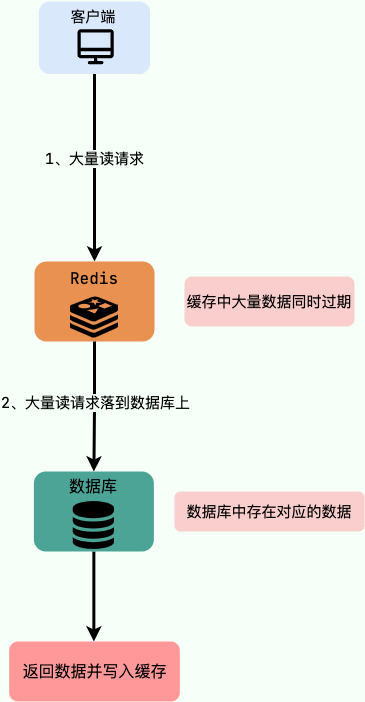文章目录
- 0.简介
- 1.概念介绍
- 2.分区表技术产生的背景
- 3.分区类型及使用方式
- 4.实现原理
- 4.1 分区表创建
- 4.2 分区表查询
- 4.3 分区表写入
- 4.4 分区表删除
0.简介
本文主要介绍PG中分区表的概念,产生分区表技术的原因,使用方式和其内部实现原理,旨在能对PG分区表技术有一个系统的说明。
1.概念介绍
分区表是数据库用于管理大量数据的一种技术,它允许将一个大表分割成多个小表,这些小表在物理上是独立的,但在逻辑上作为一个整体被查询和更新。分区表的主要优势在于提高查询性能,特别是当查询集中在少数几个分区时。此外,分区表还可以简化数据的批量删除和加载,以及将不常用的数据迁移到成本较低的存储介质上实现冷热分离。

1)主表/父表/Master Table:该表是创建子表的模板。它是一个正常的普通表,但正常情况下它并不储存任何数据。
2)子表/分区表/Child Table/Partition Table:这些表继承并属于一个主表。子表中存储所有的数据。主表与分区表属于一对多的关系,也就是说,一个主表包含多个分区表,而一个分区表只从属于一个主表
2.分区表技术产生的背景
在使用数据库过程中,随着时间的推移,每张表数据量会不断增加,造成查询速度越来越慢,在分区表之前有很多查询的技术去优化它,比如添加特殊的索引,将磁盘分区(把日志文件放到单独的磁盘分区),调整参数等等。这些优化技术都能对查询性能做出或多或少的提升,但其并没有对于表特点以及局部性的原理进行合理应用,因为对于很多应用来说,许多历史数据对于查询可能并没有太多用处,或者是某一列是特定值时是更为关系的数据,如果能够将不常用数据进行隐藏,就能大大提高查询速度,分区表就是为了解决这个问题而产生的。比如可以按照时间作为分区键进行分区将新老数据分离。
3.分区类型及使用方式
PG 10以后支持三种分区,以下都使用主流的使用方式声明式分区(还有表继承)进行说明:
1)范围(Range)分区
CREATE TABLE students (grade INTEGER) PARTITION BY RANGE(grade);
CREATE TABLE stu_fail PARTITION OF students FOR VALUES FROM (MINVALUE) TO (60);
CREATE TABLE stu_pass PARTITION OF students FOR VALUES FROM (60) TO (MAXVALUE);\d+ studentsTable "public.students"Column | Type | Collation | Nullable | Default | Storage | Stats target | Description
--------+---------+-----------+----------+---------+---------+--------------+-------------grade | integer | | | | plain | |
Partition key: RANGE (grade)
Partitions: stu_fail FOR VALUES FROM (MINVALUE) TO (60),stu_pass FOR VALUES FROM (60) TO (MAXVALUE)\d+ stu_failTable "public.stu_fail"Column | Type | Collation | Nullable | Default | Storage | Stats target | Description
--------+---------+-----------+----------+---------+---------+--------------+-------------grade | integer | | | | plain | |
Partition of: students FOR VALUES FROM (MINVALUE) TO (60)
Partition constraint: ((grade IS NOT NULL) AND (grade < 60))
可以看出,其中最大值是小于关系,不是小于等于关系。
2)列表(List)分区
列表分区明确指定根据某字段的某个具体值进行分区,默认分区(可选值)保存不属于任何指定分区的列表值。
CREATE TABLE students (status character varying(30)) PARTITION BY LIST(status);
CREATE TABLE stu_active PARTITION OF students FOR VALUES IN ('ACTIVE');
CREATE TABLE stu_exp PARTITION OF students FOR VALUES IN ('EXPIRED');
CREATE TABLE stu_others PARTITION OF students DEFAULT;\d+ studentsTable "public.students"Column | Type | Collation | Nullable | Default | Storage | Stats target | Description
--------+-----------------------+-----------+----------+---------+----------+--------------+-------------status | character varying(30) | | | | extended | |
Partition key: LIST (status)
Partitions: stu_active FOR VALUES IN ('ACTIVE'),stu_exp FOR VALUES IN ('EXPIRED'),stu_others DEFAULT\d+ stu_others;Table "public.stu_others"Column | Type | Collation | Nullable | Default | Storage | Stats target | Description
--------+-----------------------+-----------+----------+---------+----------+--------------+-------------status | character varying(30) | | | | extended | |
Partition of: students DEFAULT
Partition constraint: (NOT ((status IS NOT NULL) AND ((status)::text = ANY (ARRAY['ACTIVE'::character varying(30), 'EXPIRED'::character varying(30)]))))
3)哈希(Hash)分区
通过对每个分区使用取模和余数来创建hash分区,modulus指定了对N取模,而remainder指定了除完后的余数。
CREATE TABLE students (id INTEGER) PARTITION BY HASH(id);
CREATE TABLE stu_part1 PARTITION OF students FOR VALUES WITH (modulus 3, remainder 0);
CREATE TABLE stu_part2 PARTITION OF students FOR VALUES WITH (modulus 3, remainder 1);
CREATE TABLE stu_part3 PARTITION OF students FOR VALUES WITH (modulus 3, remainder 2);\d+ students;Table "public.students"Column | Type | Collation | Nullable | Default | Storage | Stats target | Description
--------+---------+-----------+----------+---------+---------+--------------+-------------id | integer | | | | plain | |
Partition key: HASH (id)
Partitions: stu_part1 FOR VALUES WITH (modulus 3, remainder 0),stu_part2 FOR VALUES WITH (modulus 3, remainder 1),stu_part3 FOR VALUES WITH (modulus 3, remainder 2)\d+ stu_part1;Table "public.stu_part1"Column | Type | Collation | Nullable | Default | Storage | Stats target | Description
--------+---------+-----------+----------+---------+---------+--------------+-------------id | integer | | | | plain | |
Partition of: students FOR VALUES WITH (modulus 3, remainder 0)
Partition constraint: satisfies_hash_partition('16439'::oid, 3, 0, id)
PG分区还支持创建子分区:LIST-LIST,LIST-RANGE,LIST-HASH,RANGE-RANGE,RANGE-LIST,RANGE-HASH,HASH-HASH,HASH-LIST和HASH-RANGE;以及和普通表之间互相转换,DETACH PARTITION可以将分区表转换为普通表,而attach partition可以将普通表附加到分区表上。
4.实现原理
4.1 分区表创建
分区表创建相对简单,对PG来说实际是一张逻辑表对应多张物理表,下面简单看创建时其分区表相关的调用流程。
--> transformPartitionBound --> RelationGetPartitionKey--> get_partition_strategy--> transformPartitionBoundValue--> transformPartitionRangeBounds--> validateInfiniteBounds--> check_new_partition_bound--> StorePartitionBound // Update pg_class tuple of rel to store the partition bound and set relispartition to true--> StoreCatalogInheritance // 向系统表pg_inherits插入信息// 处理stmt->partspec--> transformPartitionSpec--> ComputePartitionAttrs--> StorePartitionKey // 向pg_partitioned_table中插入分区键等信息
4.2 分区表查询
分区表查询是要根据条件查询一定数量的子表然后进行返回,其主要分为三步:
1)识别分区表并找到所有的分区子表
/** expand_inherited_tables* Expand each rangetable entry that represents an inheritance set* into an "append relation". At the conclusion of this process,* the "inh" flag is set in all and only those RTEs that are append* relation parents.*/
void
expand_inherited_tables(PlannerInfo *root)
{Index nrtes;Index rti;ListCell *rl;/** expand_inherited_rtentry may add RTEs to parse->rtable. The function is* expected to recursively handle any RTEs that it creates with inh=true.* So just scan as far as the original end of the rtable list.*/nrtes = list_length(root->parse->rtable);rl = list_head(root->parse->rtable);for (rti = 1; rti <= nrtes; rti++){RangeTblEntry *rte = (RangeTblEntry *) lfirst(rl);expand_inherited_rtentry(root, rte, rti);rl = lnext(rl);}
}
2)根据约束条件识别需要查询的分区,也就是分区裁剪,只读取需要的分区;
prune_append_rel_partitions* Process rel's baserestrictinfo and make use of quals which can be* evaluated during query planning in order to determine the minimum set* of partitions which must be scanned to satisfy these quals. Returns* the matching partitions in the form of a Relids set containing the* partitions' RT indexes.** Callers must ensure that 'rel' is a partitioned table.*/
Relids
prune_append_rel_partitions(RelOptInfo *rel)
{Relids result;List *clauses = rel->baserestrictinfo;List *pruning_steps;GeneratePruningStepsContext gcontext;PartitionPruneContext context;Bitmapset *partindexes;int i;Assert(clauses != NIL);Assert(rel->part_scheme != NULL);/* If there are no partitions, return the empty set */if (rel->nparts == 0)return NULL;/** Process clauses to extract pruning steps that are usable at plan time.* If the clauses are found to be contradictory, we can return the empty* set.*/gen_partprune_steps(rel, clauses, PARTTARGET_PLANNER,&gcontext);if (gcontext.contradictory)return NULL;pruning_steps = gcontext.steps;/* Set up PartitionPruneContext */context.strategy = rel->part_scheme->strategy;context.partnatts = rel->part_scheme->partnatts;context.nparts = rel->nparts;context.boundinfo = rel->boundinfo;context.partcollation = rel->part_scheme->partcollation;context.partsupfunc = rel->part_scheme->partsupfunc;context.stepcmpfuncs = (FmgrInfo *) palloc0(sizeof(FmgrInfo) *context.partnatts *list_length(pruning_steps));context.ppccontext = CurrentMemoryContext;/* These are not valid when being called from the planner */context.partrel = NULL;context.planstate = NULL;context.exprstates = NULL;/* Actual pruning happens here. */partindexes = get_matching_partitions(&context, pruning_steps);/* Add selected partitions' RT indexes to result. */i = -1;result = NULL;while ((i = bms_next_member(partindexes, i)) >= 0)result = bms_add_member(result, rel->part_rels[i]->relid);return result;
}
3)对结果集执行APPEND,作为最终结果输出,这和其他表append操作一致,使用ExecInitAppend和ExecAppend函数。
/* ----------------------------------------------------------------* ExecAppend** Handles iteration over multiple subplans.* ----------------------------------------------------------------*/
static TupleTableSlot *
ExecAppend(PlanState *pstate)
{AppendState *node = castNode(AppendState, pstate);if (node->as_whichplan < 0){/** If no subplan has been chosen, we must choose one before* proceeding.*/if (node->as_whichplan == INVALID_SUBPLAN_INDEX &&!node->choose_next_subplan(node))return ExecClearTuple(node->ps.ps_ResultTupleSlot);/* Nothing to do if there are no matching subplans */else if (node->as_whichplan == NO_MATCHING_SUBPLANS)return ExecClearTuple(node->ps.ps_ResultTupleSlot);}for (;;){PlanState *subnode;TupleTableSlot *result;CHECK_FOR_INTERRUPTS();/** figure out which subplan we are currently processing*/Assert(node->as_whichplan >= 0 && node->as_whichplan < node->as_nplans);subnode = node->appendplans[node->as_whichplan];/** get a tuple from the subplan*/result = ExecProcNode(subnode);if (!TupIsNull(result)){/** If the subplan gave us something then return it as-is. We do* NOT make use of the result slot that was set up in* ExecInitAppend; there's no need for it.*/return result;}/* choose new subplan; if none, we're done */if (!node->choose_next_subplan(node))return ExecClearTuple(node->ps.ps_ResultTupleSlot);}
}
4.3 分区表写入
分区表写入分为两个阶段,一个是查找到要写入的分区,然后就是正常去做写入,下面来看查找分区的函数。
/** ExecPrepareTupleRouting --- prepare for routing one tuple** Determine the partition in which the tuple in slot is to be inserted,* and modify mtstate and estate to prepare for it.** Caller must revert the estate changes after executing the insertion!* In mtstate, transition capture changes may also need to be reverted.** Returns a slot holding the tuple of the partition rowtype.*/
static TupleTableSlot *
ExecPrepareTupleRouting(ModifyTableState *mtstate,EState *estate,PartitionTupleRouting *proute,ResultRelInfo *targetRelInfo,TupleTableSlot *slot)
{ModifyTable *node;int partidx;ResultRelInfo *partrel;HeapTuple tuple;/** Determine the target partition. If ExecFindPartition does not find a* partition after all, it doesn't return here; otherwise, the returned* value is to be used as an index into the arrays for the ResultRelInfo* and TupleConversionMap for the partition.*/partidx = ExecFindPartition(targetRelInfo,proute->partition_dispatch_info,slot,estate);Assert(partidx >= 0 && partidx < proute->num_partitions);/** Get the ResultRelInfo corresponding to the selected partition; if not* yet there, initialize it.*/partrel = proute->partitions[partidx];if (partrel == NULL)partrel = ExecInitPartitionInfo(mtstate, targetRelInfo,proute, estate,partidx);/** Check whether the partition is routable if we didn't yet** Note: an UPDATE of a partition key invokes an INSERT that moves the* tuple to a new partition. This check would be applied to a subplan* partition of such an UPDATE that is chosen as the partition to route* the tuple to. The reason we do this check here rather than in* ExecSetupPartitionTupleRouting is to avoid aborting such an UPDATE* unnecessarily due to non-routable subplan partitions that may not be* chosen for update tuple movement after all.*/if (!partrel->ri_PartitionReadyForRouting){/* Verify the partition is a valid target for INSERT. */CheckValidResultRel(partrel, CMD_INSERT);/* Set up information needed for routing tuples to the partition. */ExecInitRoutingInfo(mtstate, estate, proute, partrel, partidx);}/** Make it look like we are inserting into the partition.*/estate->es_result_relation_info = partrel;/* Get the heap tuple out of the given slot. */tuple = ExecMaterializeSlot(slot);/** If we're capturing transition tuples, we might need to convert from the* partition rowtype to parent rowtype.*/if (mtstate->mt_transition_capture != NULL){if (partrel->ri_TrigDesc &&partrel->ri_TrigDesc->trig_insert_before_row){/** If there are any BEFORE triggers on the partition, we'll have* to be ready to convert their result back to tuplestore format.*/mtstate->mt_transition_capture->tcs_original_insert_tuple = NULL;mtstate->mt_transition_capture->tcs_map =TupConvMapForLeaf(proute, targetRelInfo, partidx);}else{/** Otherwise, just remember the original unconverted tuple, to* avoid a needless round trip conversion.*/mtstate->mt_transition_capture->tcs_original_insert_tuple = tuple;mtstate->mt_transition_capture->tcs_map = NULL;}}if (mtstate->mt_oc_transition_capture != NULL){mtstate->mt_oc_transition_capture->tcs_map =TupConvMapForLeaf(proute, targetRelInfo, partidx);}/** Convert the tuple, if necessary.*/ConvertPartitionTupleSlot(proute->parent_child_tupconv_maps[partidx],tuple,proute->partition_tuple_slot,&slot);/* Initialize information needed to handle ON CONFLICT DO UPDATE. */Assert(mtstate != NULL);node = (ModifyTable *) mtstate->ps.plan;if (node->onConflictAction == ONCONFLICT_UPDATE){Assert(mtstate->mt_existing != NULL);ExecSetSlotDescriptor(mtstate->mt_existing,RelationGetDescr(partrel->ri_RelationDesc));Assert(mtstate->mt_conflproj != NULL);ExecSetSlotDescriptor(mtstate->mt_conflproj,partrel->ri_onConflict->oc_ProjTupdesc);}return slot;
}
4.4 分区表删除
分区表的删除即为先删除其分区,然后整体删除。



















